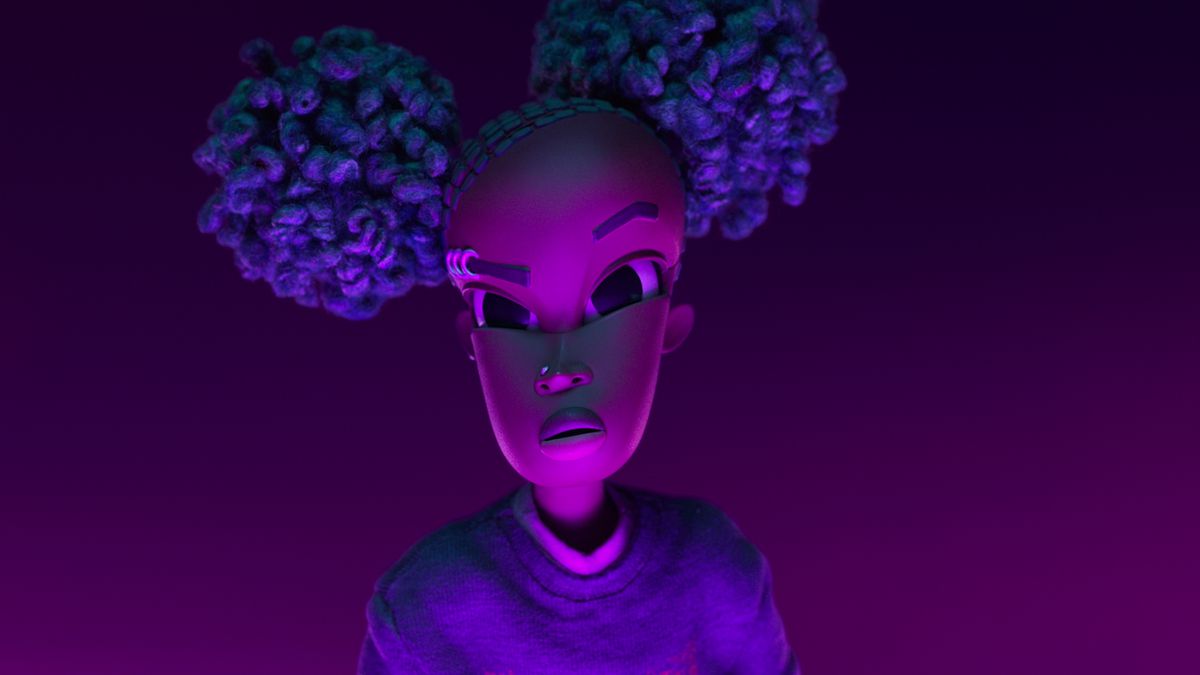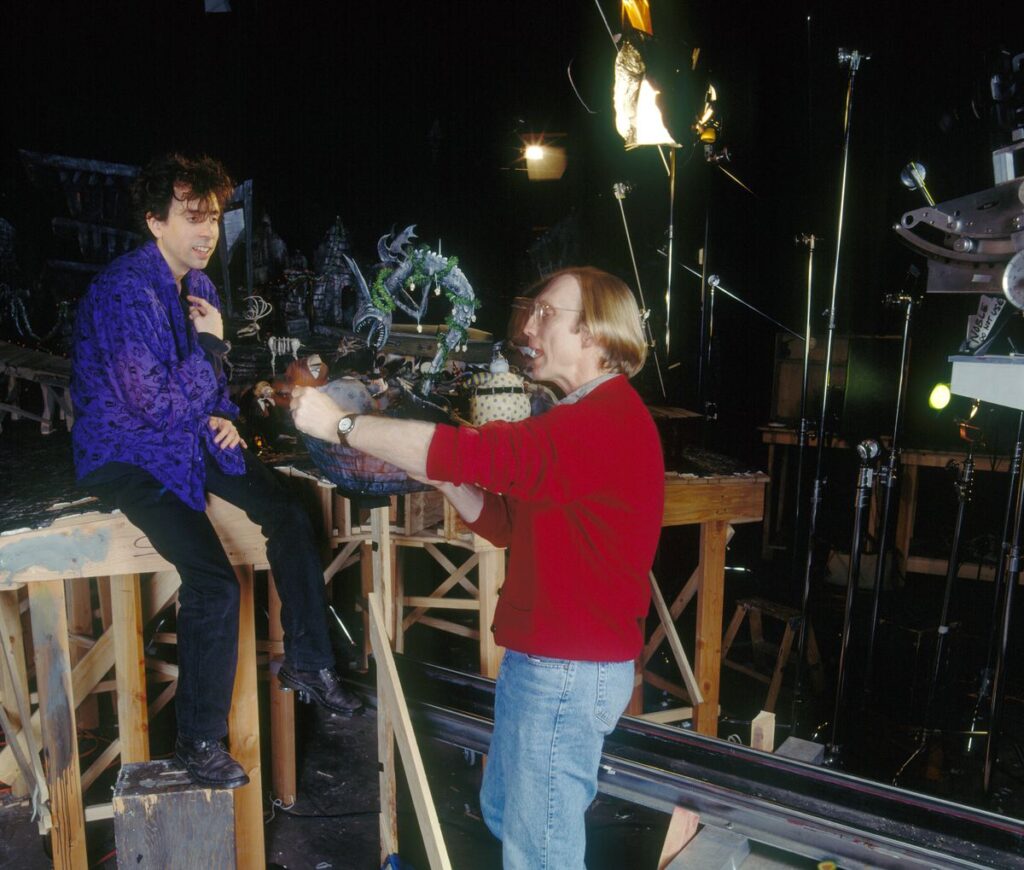Henry Selick’s strange career started with a massive, enduring hit that’s largely been credited to writer and producer Tim Burton. Selick directed the 1993 stop-motion musical The Nightmare Before Christmas, but Burton was already a box-office draw at the time, and his name is above the title on the poster, so people often assume he directed it as well. Burton and Selick met while working for Disney, and went on to work together again on Selick’s next movie, the 1996 Roald Dahl adaptation James and the Giant Peach. But Selick didn’t really make a name for himself until he directed his first stop-motion film without Burton’s involvement: the 2009 Neil Gaiman adaptation Coraline.
Still, working with Burton significantly shaped Selick’s career. Selick’s new Netflix animated film Wendell & Wild, about two scheming brother demons (Keegan-Michael Key and Jordan Peele) and the angry 13-year-old girl who summons them to Earth, is set in a bizarro world where the “souls of the darned” are tortured in an underworld amusement park, built on the rotund belly of a giant purple demon voiced by Ving Rhames. Wendell and Wild live in a jail inside the demon’s nostrils, and when they aren’t on punishment duty, they’re planting new hairs on his head. Where do images like that come from for Selick? He points to Burton’s influence.
“It’s something Tim Burton taught me a long time ago, and it holds true,” Selick told Polygon ahead of Wendell & Wild’s release. “He said, ‘The biggest successes are films that look normal, with a normal story.’ But who’s interested in doing that? Certainly not him or myself. ‘Or you could have a film that looks really weird, and has a really weird story, and that’s going to have the least amount of success, involving very few people. But you can have a film with one of those two elements being normal and the other weird, and you can have a pretty big cult film.’”
The “normal” part of Wendell & Wild is the human element, or at least aspects of it. Kat (Lyric Ross) was orphaned in a car accident as a young girl, and she’s grown into an angry, frustrated teenager who blames herself for her parents’ deaths. Early in the film, she returns to the run-down burg where she grew up — a former brewery town that two rich land developers are aggressively buying up so they can build a massive for-profit prison. All of that could come from a perfectly mainstream awards-bait drama or a based-on-real-life underdog story.
Selick’s version of the story just happens to have magic hair cream, a zombie city council, an omnivorous horse-sized tardigrade, and evil teddy bears that guide naive girls through demonic summoning rituals.
“When I got into animation, I just wanted to make weird abstract stories,” Selick said. “You could see that in my student films. But I became really enamored with telling good, clear stories, even if there are some wild elements to them, especially if you’re going to have weird visuals. So that’s a key to what I’m trying to do: straddle the line, have challenges for the audience, but not have a whole movie that’s a challenge.”
Much like Coraline, Nightmare Before Christmas, or Selick’s mostly live-action feature Monkeybone, Wendell & Wild is gothic and macabre without being scary, and hugely imaginative in unpredictable ways. The film’s hell carnival is a particularly playful and unlikely image that Selick said came from “a process of elimination, playing with lots of different ideas and shifting elements around until something feels right.”
He said the way he writes is “like spilling a bunch of colors on the floor and moving them together and sliding them around to start making pictures. […] I’m pretty good at having a vision. I have a good filter, like that gets in, that stays out. Making one of these worlds, it’s just sort of a sense of what belongs and what doesn’t.”
With Wendell & Wild, one of the dicier elements was Kat, the human protagonist, a 13-year-old Black punk-music obsessive who’s being released from juvenile detention directly to a rehabilitation program at a Catholic school. In a cinematic environment that’s often laser-focused on storytelling authenticity and who has the right to write or direct Black stories, Kat was a gamble — but one Selick said came from the heart, and from producer and collaborator Jordan Peele.
“It wouldn’t have happened without Jordan, because I wouldn’t have felt comfortable enough, at least with how the world would see it,” Selick said. He explains that in an earlier iteration of the script, the film’s protagonist was a nun and teacher at Kat’s school, Sister Helley, voiced by Angela Bassett — but that the film’s point of view was “the number-one thing [Peele] wanted to change.”

Image: Netflix
“He said [the story’s focus] should be Kat. I was worried it’d be a little too much like Coraline. He said, ‘Well, I believe she should be a person of color.’ He didn’t care which color — he said she could be Latinx, Black, Asian. I felt Kat needed to be African American, because of who Jordan is, and his desire that she could be someone he wished he could have seen in a theater when he was a kid.”
Selick said he personally identifies with Kat: “Underneath this old-white-man exterior, I’m like an 11-year-old outsider. And I think that serves me well in [creating] some of the protagonists of my films. I have an actual personal connection to them.”
But in terms of making her feel authentic to her age and experience, he talked to his wife, a special-needs advocate who works with “kids who are in danger of being put in a school-to-prison pipeline.” And he asked for input from Lyric Ross, the now-19-year-old This Is Us actor who voiced Kat.
“She brought what makes Kat real,” he said. “I had a strong idea of what she goes through, what she’s faced, and what she’s gonna face. But I asked Lyric upfront: I said, ‘I need help.’”
Selick said that when he started working with Ross, she was 14. “It was like finding a treasure, because we auditioned a whole lot of more Hollywood, Disney-trained young actors, and they were just too polished, and nothing real,” he said. “I stand behind Kat because of what Lyric brought. By the second voice-recording session, she knew her character so well, she would stop me and say, ‘Kat wouldn’t say that.’ And I’d say, ‘Well, what would she say?’ And she’d give me some choices. Really, I’d say the vital truth of her was brought from Lyric.”
Wendell & Wild has been a long time coming — it’s been 13 years since Selick’s previous completed film, Coraline. Five of that was spent in various aspects of production hell on Wendell & Wild. The remaining years were devoted to projects that never saw daylight, including a stop-motion adaptation of Adam Gidwitz’s novel A Tale Dark & Grimm, and a Disney project, The Shadow King, which the studio shelved after years of development.
Could Selick’s deal with Netflix let him revive those projects? He’s careful about committing. During a set visit in Portland in early 2022, he explained that he now owns the rights to The Shadow King, which he deemed “too weird” for Disney, and that he’d like to restart work on it someday.
“It’s a really cool story,” he said. “It’s a kid with extraordinarily weird hands that he has to hide under sleeves, but ultimately, he learns to cast shadows that come to life with his hands. So that’s something I’d love to revive.”

Image: Netflix
He’s also pitched Netflix on an adaptation of Neil Gaiman’s 2013 novel The Ocean at the End of the Lane. Past publicity had linked him with a possible adaptation of Gaiman’s The Graveyard Book, but he said that project isn’t on the table for the future: “That one is still tied up at Disney. They’ve never broken the code on that. I absolutely didn’t know how to do it.”
Whether any of these projects are possible at Netflix may depend on how Wendell & Wild is received. Selick said Netflix is “taking bigger risks than all the other studios right now,” particularly on stop-motion projects like Guillermo del Toro’s version of Pinocchio, and on upcoming projects with Aardman Animations. “So you know, I have to be patient and see what happens.”
His biggest hope for the moment is that Wendell & Wild finds its fandom — the specific group of people Burton alluded to, the people who love weird elements in their stories. “I can’t force people to like it,” Selick said during that set visit. “But several of the things I’ve worked on have ended up being very successful, and they’ve lasted a long time. That’s what I want. I want projects that are timeless. I don’t want to be safe.”
Wendell & Wild debuts on Netflix on Oct. 28.

